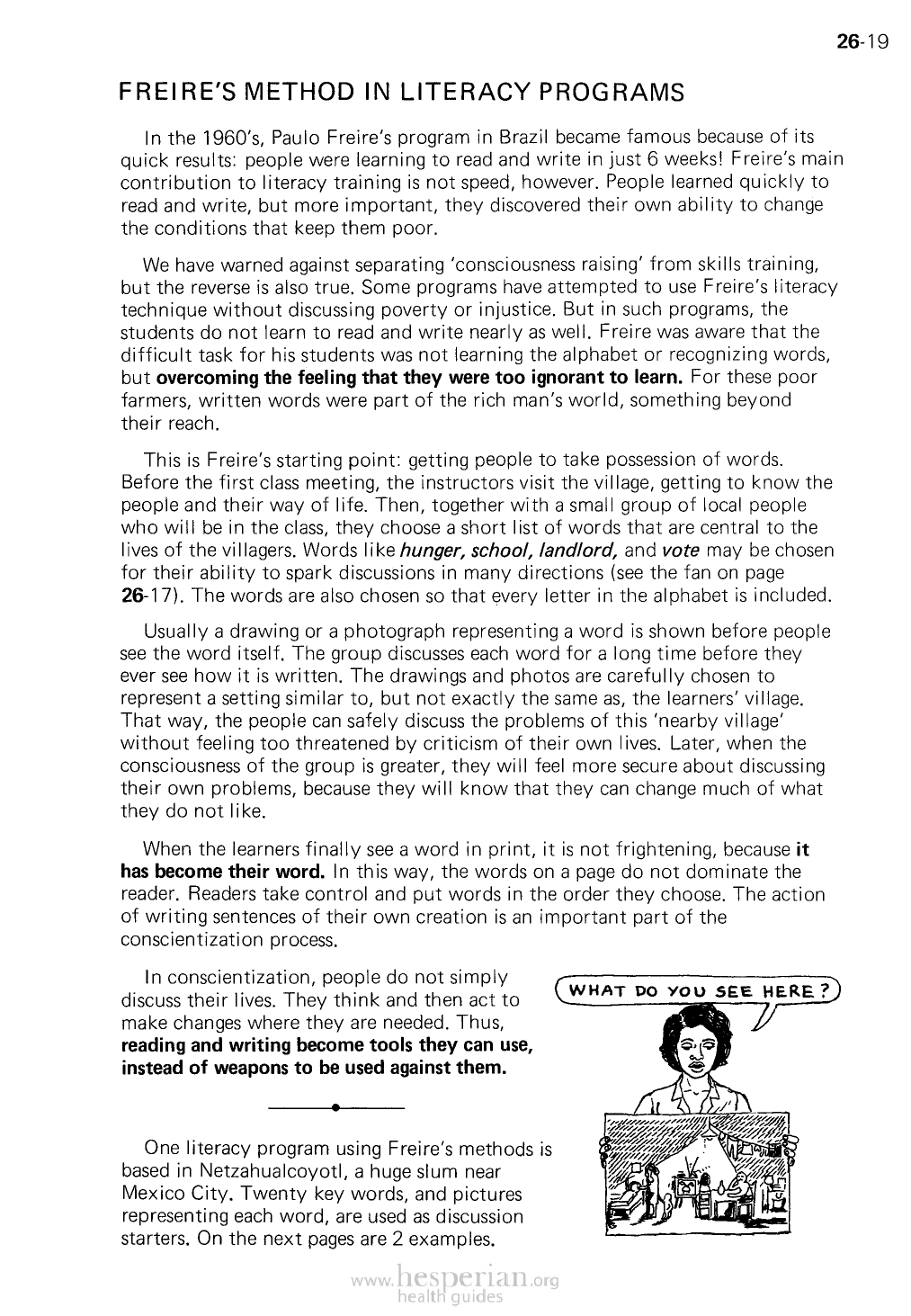
26-19
FREIRE’S METHOD IN LITERACY PROGRAMS
In the 1960’s. Paulo Freire’s program in Brazil became famous because of its
quick results: people were learning to read and write in just 6 weeks! Freire’s main
contribution to literacy training is not speed, however. People learned quickly to
read and write, but more important, they discovered their own ability to change the
conditions that keep them poor.
We have warned against separating ‘consciousness raising’ from skills training,
but the reverse is also true. Some programs have attempted to use Freire’s literacy
technique without discussing poverty or injustice. But in such programs, the
students do not learn to read and write nearly as well. Freire was aware that the
difficult task for his students was not learning the alphabet or recognizing words,
but overcoming the feeling that they were too ignorant to learn. For these
poor farmers, written words were part of the rich man’s world, something beyond
their reach.
This is Freire’s starting point: getting people to take possession of words. Before
the first class meeting, the instructors visit the village, getting to know the people
and their way of life. Then, together with a small group of local people who will be
in the class, they choose a short list of words that are central to the lives of the
villagers. Words like hunger, school, landlord, and vote may be chosen for their
ability to spark discussions in many directions (see the fan on page 26-17). The
words are also chosen so that every letter in the alphabet is included.
Usually a drawing or a photograph representing a word is shown before people
see the word itself. The group discusses each word for a long time before they ever
see how it is written. The drawings and photos are carefully chosen to represent a
setting similar to, but not exactly the same as, the learners’ village. That way, the
people can safely discuss the problems of this ‘nearby village’ without feeling too
threatened by criticism of their own lives. Later, when the consciousness of the
group is greater, they will feel more secure about discussing their own problems,
because they will know that they can change much of what they do not like.
When the learners finally see a word in print, it is not frightening, because it has
become their word. In this way, the words on a page do not dominate the reader.
Readers take control and put words in the order they choose. The action of writing
sentences of their own creation is an important part of the conscientization process.
In conscientization, people do no! simply discuss
their lives. They think and then act to make changes
where they are needed. Thus. reading and writing
become tools they can use, instead of weapons
to be used against them.
One literacy program using Freire’s methods is
based in Netzahualcoyotl, a huge slum near Mexico
City. Twenty key words, and pictures representing
each word, are used as discussion starters. On the
next pages are 2 examples.